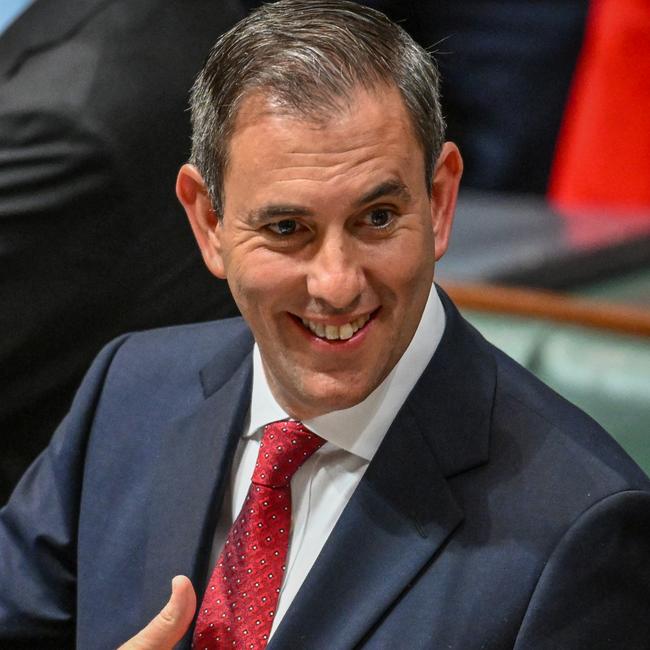Editorial: Qld misses out, but at least the platypus are safe
There are few announcements of significance for Queensland in the 1000 or so pages that accompany this budget, writes the editor.
Opinion
Don't miss out on the headlines from Opinion. Followed categories will be added to My News.
Now we know why it was that Premier Steven Miles chose federal budget day to launch an unprecedented attack on his Labor colleagues in Canberra for opening the migration floodgates.
He was taking a leaf from Annastacia Palaszczuk’s playbook in attacking the federal government for its lack of investment in this booming state – and according to this budget the Premier might well have a valid point.
There in black and white, the budget – federal Treasurer Jim Chalmers’s third – confirms a flood of overseas migration is not being matched with the investments in transport, housing and community infrastructure to support it.
There are few announcements of significance for Queensland in the 1000 or so pages that accompany this budget.
While previously announced, funding for the Bruce Highway is welcome and cash to start work on the critical Sunshine Coast rail project is worthwhile. Both have been strongly advocated for by The Courier-Mail, the latter as a critical piece of legacy infrastructure from hosting the 2032 Olympic and Paralympic Games.
But there is little else offered to this state by its hometown treasurer. The investment in transport infrastructure projects across southeast Queensland totals $2.2bn – equating to just one third of the cost of Cross River Rail. It is hardly an adequate investment for a booming state that is charging towards hosting the world’s biggest event in just eight years from now.
And it means that Queensland will continue to suffer from painful growing pains, even if the Albanese Government lowers immigration.

In the year to September, net interstate migration to Queensland was 32,625 people – three times more than Western Australia, the only other state that saw growth on that measure.
Yet Mr Chalmers’s budget fails to invest in generational projects and reforms to protect our state’s unique liveability. This is a miss.
We can only hope Mr Chalmers is holding more up his sleeve for the election campaign due early next year – at which Labor will need to win more seats in Queensland if it is to have any hope of a majority.
More broadly, this is a high-spending but no-frills budget that helps a lot of people, a little.
Larger tax cuts for more workers, overdue debt relief for students, and a landmark $300 energy bill rebate for every household combine to make life ever so slightly easier for the millions buckling under cost-of-living pressures.
Soaring mining exports and tax receipts have allowed Mr Chalmers to post a $9.3bn surplus – the second consecutive surplus for more than a decade. But in delivering this true Labor budget, Mr Chalmers will send the nation into heavy deficits across the forward estimates.
A $28.3bn deficit is forecast in 2024–25, driven by his cost-of-living relief plan – and what Mr Chalmers calls “unavoidable spending”.
Mr Chalmers is unapologetic about the grim forecast for the nation’s accounts. But in this political environment, why would he be? Debt reduction and sound economic management is not the political high ground it was just half-a-decade ago. In Canberra and in Brisbane, politicians of both sides now rarely choose to favour long-term economic management over short-term populist policies.
This month state Treasurer Cameron Dick even lambasted economist Gene Tunny for daring to question the wisdom of the state spending $2.5bn on its one-off $1000 energy credit for households – noting Mr Tunny’s “obsession is with paying down debt”.
Mr Chalmers, whose electorate office is next door to Mr Dick’s, showed last night he is as unfazed by debt and deficit as his neighbour.
The cornerstone of his mammoth cost-of-living spend is that $300 power bill rebate – that will cost $3.5bn. (Perhaps the knowledge of this was why Premier Miles brought forward his $1000 power bribe).
Like the Queensland one, Mr Chalmers’s bill credit is not means tested and will be delivered to every resident – those in Ascot will get the same as those in Aspley, just as the residents of Hamilton will receive what those in Hughenden do.
This budget is more about hope than immediate support. Subdued growth is forecast over the forward estimates, while higher wages growth and a moderation in inflation is expected to support growth in disposable incomes.
On the critical issue of housing, rising cash allocations across the forward estimates under the National Agreement on Social Housing and Homelessness are welcome. In Queensland’s case, that cash rises from $355m this financial year to $379m in 2027-28, but there is little detail about the secondary housing support programs unveiled last night.
Mr Chalmers has pledged $1bn to urgently remove the infrastructure bottlenecks holding back housing supply, but has not determined how much each state will get.
Beyond infrastructure, indexed increases to health funding is unlikely to release the pressure on Queensland hospitals. There is no certainty how much of the additional $58.5m allocated to build Medicare Urgent Care Clinics the state will see – and funding for Queensland initiatives to help older patients avoid hospital admission and get discharged earlier falls off a cliff from $42.5m next financial year to $18.3m in 2026-27.
There is not even any love for Mr Miles’s pet renewable energy project, with the feds – perhaps wisely – steering clear of any cash for the Pioneer-Burdekin pumped hydro scheme. And so at least Mr Chalmers has done Queensland’s platypus population a favour.




